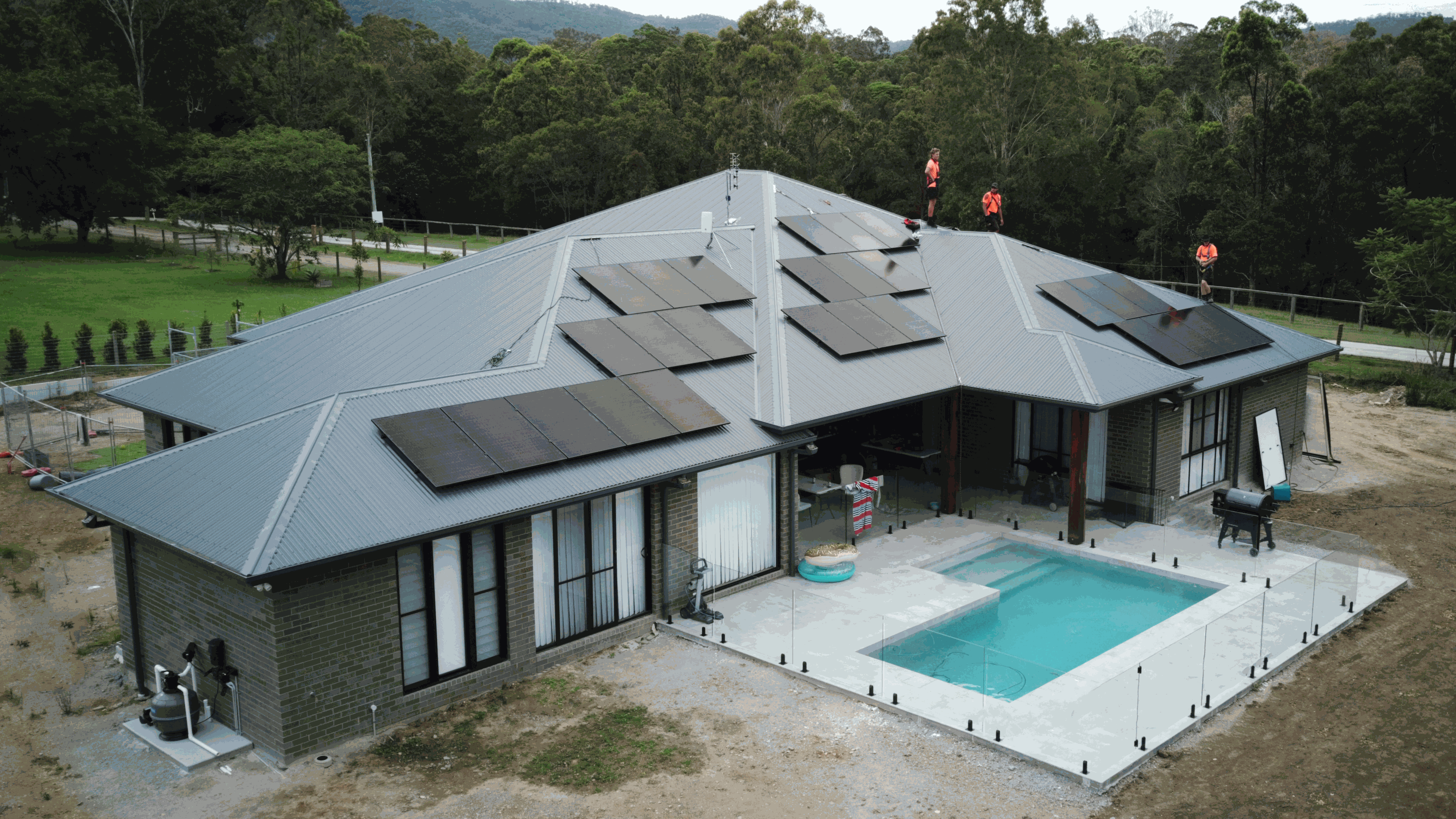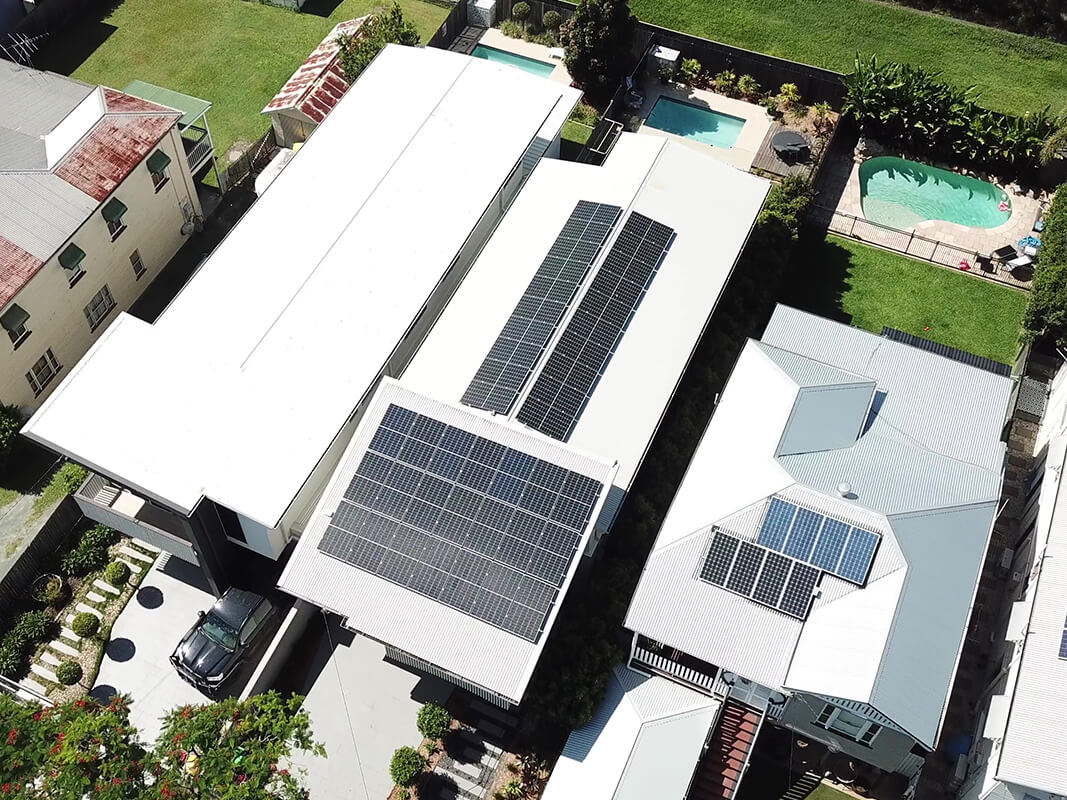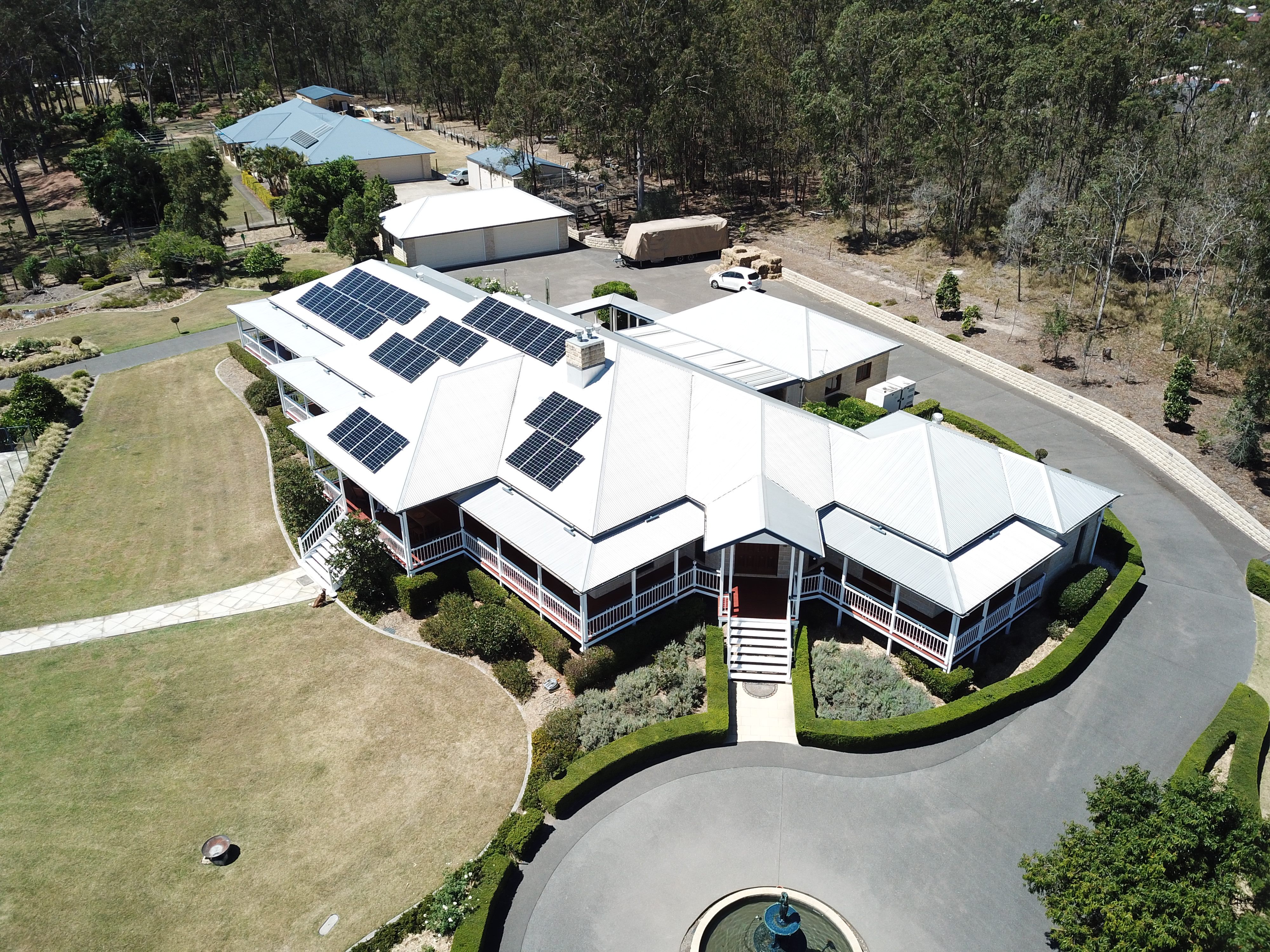If you’ve been looking to install a solar system for your home or business, chances are you’ve come across the terms kilowatt (kW) and kilowatt-hours (kWh). For someone who is unfamiliar of the differences, it’s easy to assume that kW and kWh can be used interchangeably.
However, kW and kWh refer to two different units of measure, both of which are important to understand when discussing electricity and solar. Knowing the distinction between the two can ensure that you know the capabilities of your solar system, and is essential to understanding how you can lower your energy consumption to save you the most money.
Power vs. Energy: Knowing the Difference Matters
In order to establish the difference between kW and kWh, we first need to cover the science behind the definitions and distinguish the major underlying factors at play. To best understand kW and kWh, we need to break down power and energy, and how they differ from one another.
Similar to kW and kWh, power and energy are often used interchangeably, but they actually define different parameters when discussing electricity and solar systems.
Energy
Energy is defined as the ability or capacity to do work. It is the driving force behind all motion. Energy comes in many different forms, such as kinetic energy (energy of motion), potential energy (energy of position or state), thermal energy (energy in the form of heat), and electromagnetic energy (energy carried by electromagnetic waves).
For example, people use energy everyday to do things such as walk, workout, or ride a bike. The energy that fuels our body’s movement is derived from the chemical energy stored in the food we eat, and is converted to kinetic energy which gives us the ability to move.
Our homes and cities are also powered by energy derived from external sources. Traditionally, we have harvested chemical energy from coal, oil and natural gases (fossil fuels) and converted it to electrical energy.
We are gradually seeing the transition from fossil fuels to renewable technologies like solar, wind and hydro fuels, but the process of deriving energy is still the same; we convert chemical energy to electrical energy so we can turn on our lights, watch TV, and charge our electric vehicles (EV).
.png)
Power
.png)
While energy refers to the capacity to do work or achieve motion, power is the rate at which energy is used or transferred over time. To power devices like lights and appliances, energy must be distributed at varying rates depending on the amount of force required for them to work.
For instance, a small appliance like a kettle requires only a small amount of energy to function, resulting in lower power consumption. Conversely, electric vehicles demand large amounts of energy to charge, necessitating a high rate of energy transfer, or power, to administer a full charge.
Kilowatts and Kilowatt-Hours: Understanding the Terminology
Now that we understand the difference between energy and power, we can look at how this relates to kilowatts and kilowatt-hours.
The main difference between kW and kWh is what they measure.
A kilowatt (kW) is a unit to measure power, and
A kilowatt-hour (kWh) is a unit to measure energy
Let’s take a closer look at each.
Kilowatt (kW)
A kilowatt (kW) is a unit to measure the rate of power of an electrical device or load, meaning it measures how fast the energy is used or transferred. One kilowatt is equal to 1,000 watts.
Most electrical devices have a power rating measured in kW - the kW rating signifies how much power is required to run or power the device. Smaller devices, such as kitchen appliances, may only have a watts (W) rating as they require less than 1kW to run.
You can compare the power usage of your household appliances by checking the kW or W rating, and then use this information to determine the energy, or kilowatt-hours, your appliances use.
.jpg)
Kilowatt-Hours (kWh)
A kilowatt-hour (kWh) measures the energy of an electrical device or load, meaning it measures how much energy has been consumed or produced with power of 1kW over 1 hour. An important aspect of kilowatt-hours is the consideration of time. The higher the rate of power (kW) of an electrical device and the longer it is used for (hours), the more electricity it consumes (kWh). For example, if you charge your electric vehicle with a 22kW EV Charger for 1 hour, you will use 22kWh of energy.
The calculation for finding the kilowatt-hours is:
kilowatts (kW) x hours used (hr) = kilowatt-hours (kWh).
To show how this applies to real world applications, we have provided two examples.
Example 1.
The average household lightbulb needs 0.06kW (60W on the product packaging) every hour to run. In comparison, a standard split system air conditioner needs 1.2kW every hour to run. If both devices were used consistently for 2 hours they would have used different levels of energy. The lightbulb used 0.12kWh of energy, whereas the aircon used 2.4kWh of energy.

Example 2.
This comparison shows the difference between Level 2 and Level 3 EV Chargers. A Level 2 EV Charger can provide 5.5kW of power every hour. Comparatively, a Level 3 EV Charger can provide 50kW or power every hour. If you were to charge an EV at each of these chargers for 2 hours, your energy yield would be very different. From the Level 2 Charger, your EV would receive 11kWh of energy. From the Level 3 Charger, your EV would receive 100kWh of energy… big difference.

Why is it Important to Differentiate Between kW and kWh?
So, now that we can differentiate between kilowatts and kilowatt-hours, it’s important to understand why this information is relevant to you.
So, now that we can differentiate between kilowatts and kilowatt-hours, it’s important to understand why this information is relevant to you.
It’s crucial to understand the difference between kW and kWh so that you can best monitor and manage your electrical usage. Knowing the difference between kW and kWh is essential in helping you decipher information on your electricity bill so you can identify energy consumption patterns and determine where you can cut your usage to save you money.
By knowing the kW rating of your appliances, you can quickly estimate their energy consumption in kilowatt-hours (kWh). This information is crucial for managing your energy usage effectively. By comparing the energy consumption of your

appliances you can make informed decisions about when to use them to minimise your energy costs. For example, running your high-energy appliances during the day when your solar is performing at its peak will help provide significant savings on your electricity bills.
Read More: Solar Bill Savings & Combating Electricity Price Hikes with Solar

"It is also important to remember that choosing more efficient appliances that might have the same power requirements as older generations but have a much shorter run time can save you a significant amount of energy."
For example a new fridge and an old fridge could have a 300W power requirement but the new fridge only cycles for 10 hrs of the day (3kWh) whereas the older fridge might require 15-20hr cycle time.
Changes in lighting can also improve your total energy consumption. Even though the power is relatively small due to lights generally running for a long time and having multiple throughout a home, the total energy use can be high. For instance a 10 x 60W Halogen light running for 6 hrs ((.06 x 6)x 10 = 3.6kWh) compared to 6W LEDs over the same time would be 0.36kWh.
Read More: How To Improve Your Solar Self-Consumption With Load Shifting
Applying this Knowledge to Solar Systems
Understanding the distinction between kW and kWh is essential for more than just reading your electricity bill. These two units of measurement play a large role in solar systems and how they are sized to suit your energy needs. Knowing the power required for the system versus the energy it will produce is important to helping you make the right decision with your solar system.
Like your household appliances, solar panels will also come with a kW or W rating. However for solar panels, a watts rating refers to the panel’s power output rather than detailing how much power it requires. For example, one of our best-rated solar panels, the Trina Vertex S+, has a rating of 430 Watts. So, if you were to put 12 of these panels on your roof, your total watts capacity would be 5,160W or 5.16kW, giving you a 5.16kW solar array. This is roughly the average household solar system size in Australia.


So, if you have a 5.16kW solar array, does that mean you’re generating 5.16kW of power? Not necessarily, no. This kW rating represents the system’s capacity to produce energy based on a standard test condition, meaning that 5.16kW is the maximum power output for the system at any given time under those conditions.
The actual energy production will fluctuate depending on a variety of factors, such as sunlight availability and inclement weather, orientation, inclination, inverter efficiencies and many others. As a reputable solar installer we will help minimise these losses as much as possible through careful PV design.
Therefore, understanding the kWh rating of a solar system is crucial for determining its actual energy production in a given period. For example, if your solar system can consistently generate 2kW of power over an hour, you’ll generate 2kWh of
energy for your home during that time. To put this in perspective, 2kWh of energy can power a microwave for about 1.5hrs (although this may not be practical).
However, solar panels stop generating electricity at night, meaning that solar power production stops when the sun sets and resumes the next morning. The power produced is also less in the morning, peaks in the middle of the day and less in the afternoon resulting in a bell curve looking graph for power. As a result, it’s essential to consider the kWh production of a solar system rather than just the kW rating of its components. By doing so, you can get a more comprehensive understanding of how the solar system will benefit you.
Read More: Solar System Sizing
Solar Will Only Save You Money and Perform as Promised When Installed by a Reputable and Long-Standing Installer
It is critical to choose your solar installer carefully if you decide to proceed with solar. Unfortunately, the solar industry is fraught with companies whose aim is to make a quick buck with a cheap install with cheap components. If you think the price is too good to be true, then it probably is.
Always choose a solar installer that has been trading for at least 10-15 years. A long-standing installer will be able to honour their warranties and service guarantees. A ‘solar orphan’ is someone whose installer has fallen out of business and thus has no points of contact for warranty claims or system support (unfortunately, this happens a lot more than you may think!).
Your solar installer should also complete a site inspection and analysis of your personal energy needs, to design a system that is most suited to your energy goals. On-site inspections are preferable, as this will help to avoid any hidden fees or additional costs that may be incurred come the day of installation (as pricing is always subject to inspection).
In summary, the most important things to look for when selecting an installer are evidence of customer testimonials focused on reliability and honesty, a high standard of workmanship, warranty periods, and quality components.

Springers Solar | Queensland's Most Experienced Solar Installer
Springers Solar provides quality components with proven performance, backed by industry-leading warranties, and dedicated after-sales support. Thousands of satisfied customers over more than 21 years of operation make Springers Solar one of the most established and experienced solar companies in Australia.
Springers Solar has received multiple awards for design and installation and is a certified/preferred installer for a large range of solar panel, inverter, and solar battery manufacturers, including Tesla, REC, and SolarEdge.
Our dedicated in-house team of electrical engineers, project managers, solar PV designers, solar installers and electricians work closely with you before, during, and long after your project is completed. Springers Solar offers an industry-leading 10-year workmanship warranty which is a testament to our qualified staff and offers you outstanding value and peace of mind.
Visit our About Us page here!
What’s the Difference Between kW and kWh?